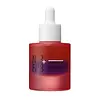What's inside
What's inside
 Key Ingredients
Key Ingredients

 Benefits
Benefits

 Concerns
Concerns

No concerns
 Ingredients Side-by-side
Ingredients Side-by-side

Water
Skin ConditioningGlycerin
HumectantButylene Glycol
HumectantPhenoxyethanol
PreservativeCarbomer
Emulsion StabilisingCarnosine
Skin ConditioningSodium Hyaluronate
HumectantPanthenol
Skin ConditioningEthylhexylglycerin
Skin ConditioningChlorphenesin
AntimicrobialAllantoin
Skin ConditioningSodium Hydroxide
BufferingDisodium EDTA
Octyldodecanol
EmollientHydrogenated Lecithin
EmulsifyingCeramide NP
Skin ConditioningPolyglyceryl-10 Stearate
Skin Conditioning1,2-Hexanediol
Skin ConditioningSucrose Stearate
EmollientPhytosphingosine
Skin ConditioningCholesterol
EmollientPhospholipids
Skin ConditioningCeramide Ns
Skin ConditioningCeramide Ng
Skin ConditioningCeramide As
Skin ConditioningCeramide AP
Skin ConditioningCeramide EOP
Skin ConditioningWater, Glycerin, Butylene Glycol, Phenoxyethanol, Carbomer, Carnosine, Sodium Hyaluronate, Panthenol, Ethylhexylglycerin, Chlorphenesin, Allantoin, Sodium Hydroxide, Disodium EDTA, Octyldodecanol, Hydrogenated Lecithin, Ceramide NP, Polyglyceryl-10 Stearate, 1,2-Hexanediol, Sucrose Stearate, Phytosphingosine, Cholesterol, Phospholipids, Ceramide Ns, Ceramide Ng, Ceramide As, Ceramide AP, Ceramide EOP
Water
Skin ConditioningOrbignya Oleifera Seed Oil
EmollientPrunus Amygdalus Dulcis Oil
Skin ConditioningVitis Vinifera Seed Oil
EmollientAdansonia Digitata Seed Oil
EmollientPassiflora Edulis Seed Oil
EmollientGlycerin
HumectantCucurbita Pepo Seed Oil
EmollientHelianthus Annuus Seed Oil
EmollientPrunus Armeniaca Kernel Oil
MaskingPrunus Persica Kernel Oil
EmollientBakuchiol
AntimicrobialPalmitoyl Tripeptide-1
Skin ConditioningAcetyl Hexapeptide-8
HumectantCopper Tripeptide-1
Skin ConditioningSodium Hydroxide
BufferingCaprylic/Capric Triglyceride
MaskingCetyl Ethylhexanoate
EmollientGluconolactone
Skin ConditioningLimonene
PerfumingBrassica Campestris Seed Oil
Skin ConditioningSodium Benzoate
MaskingPolyglyceryl-3 Laurate
EmulsifyingGlycyrrhiza Glabra Root Extract
BleachingPolyglyceryl-3 Diisostearate
EmulsifyingCrithmum Maritimum Extract
Skin ConditioningTocopherol
AntioxidantAlthaea Officinalis Root Extract
Skin ConditioningOryza Sativa Bran Extract
Skin ConditioningMethyl Glucose Sesquistearate
EmollientCitrus Nobilis Peel Oil Expressed
PerfumingCalcium Gluconate
HumectantEthylhexyl Palmitate
EmollientLinalool
PerfumingTribehenin
EmollientSorbitan Isostearate
EmulsifyingWater, Orbignya Oleifera Seed Oil, Prunus Amygdalus Dulcis Oil, Vitis Vinifera Seed Oil, Adansonia Digitata Seed Oil, Passiflora Edulis Seed Oil, Glycerin, Cucurbita Pepo Seed Oil, Helianthus Annuus Seed Oil, Prunus Armeniaca Kernel Oil, Prunus Persica Kernel Oil, Bakuchiol, Palmitoyl Tripeptide-1, Acetyl Hexapeptide-8, Copper Tripeptide-1, Sodium Hydroxide, Caprylic/Capric Triglyceride, Cetyl Ethylhexanoate, Gluconolactone, Limonene, Brassica Campestris Seed Oil, Sodium Benzoate, Polyglyceryl-3 Laurate, Glycyrrhiza Glabra Root Extract, Polyglyceryl-3 Diisostearate, Crithmum Maritimum Extract, Tocopherol, Althaea Officinalis Root Extract, Oryza Sativa Bran Extract, Methyl Glucose Sesquistearate, Citrus Nobilis Peel Oil Expressed, Calcium Gluconate, Ethylhexyl Palmitate, Linalool, Tribehenin, Sorbitan Isostearate
Alternatives
Ingredients Explained
These ingredients are found in both products.
Ingredients higher up in an ingredient list are typically present in a larger amount.
Glycerin is already naturally found in your skin. It helps moisturize and protect your skin.
A study from 2016 found glycerin to be more effective as a humectant than AHAs and hyaluronic acid.
As a humectant, it helps the skin stay hydrated by pulling moisture to your skin. The low molecular weight of glycerin allows it to pull moisture into the deeper layers of your skin.
Hydrated skin improves your skin barrier; Your skin barrier helps protect against irritants and bacteria.
Glycerin has also been found to have antimicrobial and antiviral properties. Due to these properties, glycerin is often used in wound and burn treatments.
In cosmetics, glycerin is usually derived from plants such as soybean or palm. However, it can also be sourced from animals, such as tallow or animal fat.
This ingredient is organic, colorless, odorless, and non-toxic.
Glycerin is the name for this ingredient in American English. British English uses Glycerol/Glycerine.
Learn more about GlycerinSodium Hydroxide is also known as lye or caustic soda. It is used to adjust the pH of products; many ingredients require a specific pH to be effective.
In small amounts, sodium hydroxide is considered safe to use. However, large amounts may cause chemical burns due to its high alkaline.
Your skin has a natural pH and acid mantle. This acid mantle helps prevent harmful bacteria from breaking through. The acid mantle also helps keep your skin hydrated.
"Alkaline" refers to a high pH level. A low pH level would be considered acidic.
Learn more about Sodium HydroxideWater. It's the most common cosmetic ingredient of all. You'll usually see it at the top of ingredient lists, meaning that it makes up the largest part of the product.
So why is it so popular? Water most often acts as a solvent - this means that it helps dissolve other ingredients into the formulation.
You'll also recognize water as that liquid we all need to stay alive. If you see this, drink a glass of water. Stay hydrated!
Learn more about Water